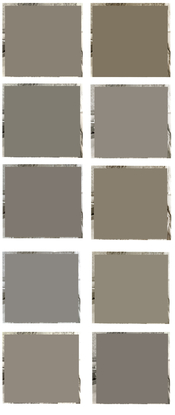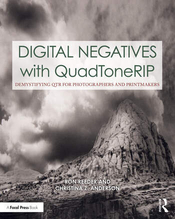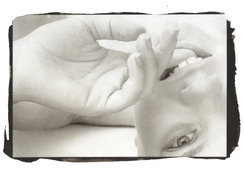Don12x20
Member
1) Paper makes a difference - in Dmax and exposure scale. HPR was the finest of 44 papers tested for Dmax.
2) Developer choice results in subtle differences in color for a given paper. You will see a couple of composite image tests in the upcoming book (to be published by Routledge in August).
3) Like Platinum/palladium, there is good reason to use a sequence of three trays for clearing after development - A sequence of disodium EDTA, Citric acid and then tetrasodium EDTA works well for archival permanence. Citric acid alone is insufficient to clear and can result in yellow staining and/or fading.
Don Nelson
Attached is an image showing average blurred colors for the ten developers tested on HPR. I cannot share the original images as my agreement with Routledge does not permit me to share the original. (But blurring will show the colors). Book will be available in August and is the result of extensive testing.
Top six - reading from upper left-ammonium citrate developer, borax developer. classic borax Rochelle salts developer, gray-blue tone developer, Henry Hall developer, Rochelle salt developer
Bottom four - reading from top (of the four) left - sodium acetate developer, 1/2 sodium acetate + 1/2 ammonium citrate developer, sodium citrate developer, warm brown-black developer.
2) Developer choice results in subtle differences in color for a given paper. You will see a couple of composite image tests in the upcoming book (to be published by Routledge in August).
3) Like Platinum/palladium, there is good reason to use a sequence of three trays for clearing after development - A sequence of disodium EDTA, Citric acid and then tetrasodium EDTA works well for archival permanence. Citric acid alone is insufficient to clear and can result in yellow staining and/or fading.
Don Nelson
Attached is an image showing average blurred colors for the ten developers tested on HPR. I cannot share the original images as my agreement with Routledge does not permit me to share the original. (But blurring will show the colors). Book will be available in August and is the result of extensive testing.
Top six - reading from upper left-ammonium citrate developer, borax developer. classic borax Rochelle salts developer, gray-blue tone developer, Henry Hall developer, Rochelle salt developer
Bottom four - reading from top (of the four) left - sodium acetate developer, 1/2 sodium acetate + 1/2 ammonium citrate developer, sodium citrate developer, warm brown-black developer.






